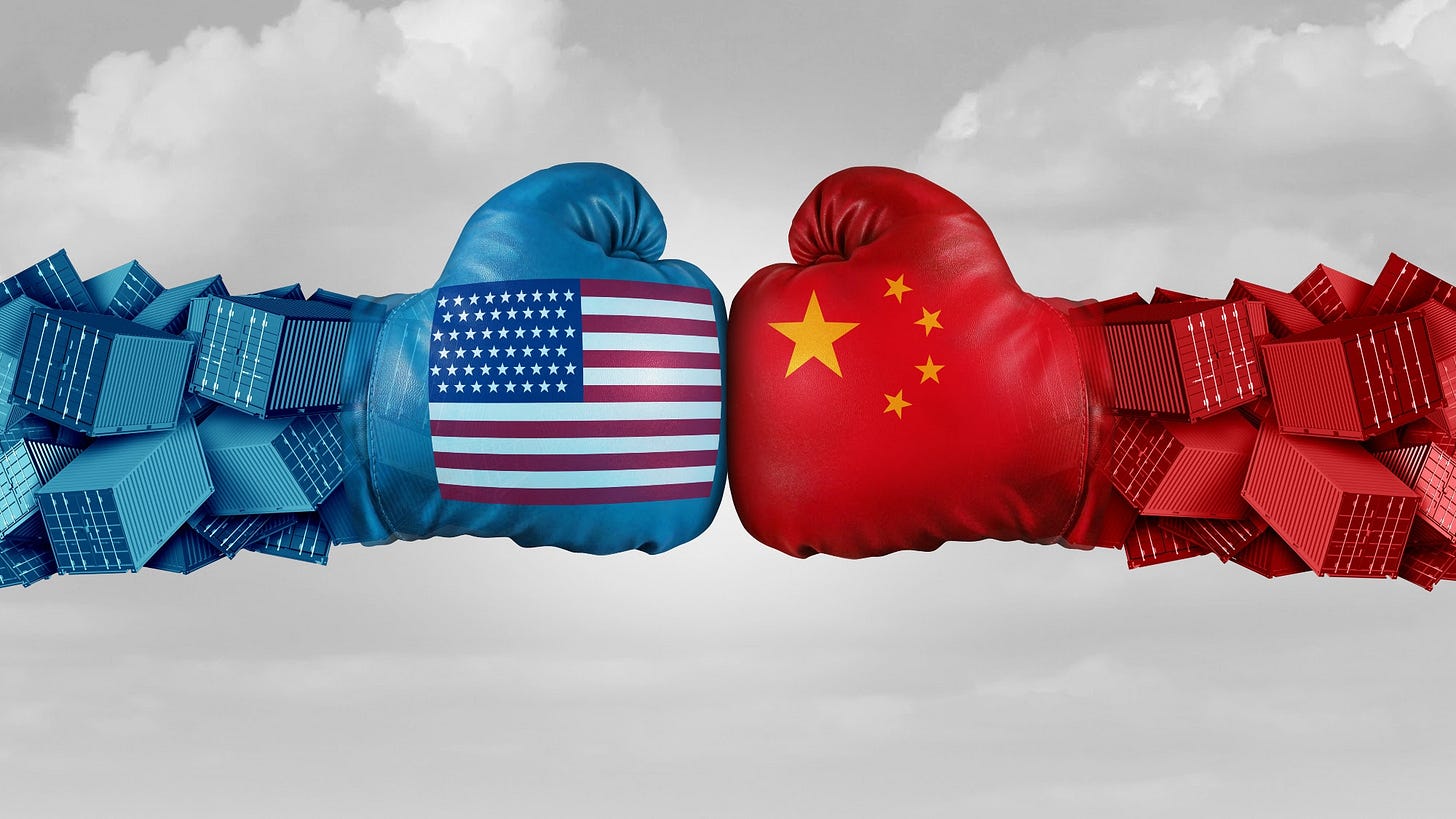🏦 US Banks: Stormy Seas
Volatility lifted Q1 results—but uncertainty clouds the outlook
Welcome to the Premium edition of How They Make Money.
Over 200,000 subscribers turn to us for business and investment insights.
In case you missed it:
🌊 Wall Street navigates stormy seas.
America’s biggest banks kicked off 2025 with strong trading revenue and stable consumer behavior—but under a cloud of mounting uncertainty.
New sweeping US tariffs have jolted markets and forced CEOs to temper their outlooks. Volatility created windfalls on trading desks, but executives struck a cautious tone as recession odds rose and corporate clients hit pause on deals, hiring, and expansion.
Let’s break down the results.
Today at a glance:
The Big Picture
BofA: Trading Leads the Way
Wells Fargo: Cost Discipline
Morgan Stanley: Equities Take the Cake
Goldman Sachs: Volatility Wins Again
Citigroup: Trading Lifts All Boats
FROM OUR PARTNERS
Tariffs Are Back. So Is Market Uncertainty.
With Trump signaling a return to steep tariffs on Chinese imports, the markets are bracing for more volatility. Public tech stocks are already reacting, and investors are scrambling for stability.
That’s why smart capital is flowing into private markets — and one company is turning heads.
This smart home disruptor is bringing affordable automation to window shades, backed by 10+ patents, an exclusive Amazon partnership, and $10M+ in revenue.
Now sold in 127 Best Buy locations and launching in Home Depot in 2025, this tech startup is following the same acquisition blueprint as Ring ($1.2B) and Nest ($3.2B) — and they’re just getting started.
With 200% YoY growth and support from investors like Daymond John, this is a rare chance to invest before their next phase of expansion.
Explore the opportunity before the next big move.
The Big Picture
Here’s an updated look at the largest US banks by market cap.
As a reminder, banks make money through two main revenue streams:
💵 Net Interest Income (NII): The difference between interest earned on loans (like mortgages) and interest paid to depositors (like savings accounts). It’s the primary source of income for many banks and depends on interest rates.
👔 Noninterest Income: The revenue from services unrelated to interest. It includes fees (like ATM charges), advisory services, and trading revenue. Banks relying more on noninterest income are less affected by interest rate changes.
Here are the significant developments in Q1 FY25:
📉 Recession risk rises, but views diverge: JPMorgan’s Jamie Dimon called a recession a “likely outcome,” while BofA and Citi said they don’t expect one—yet. Most banks raised credit provisions in response to growing macro uncertainty.
💹 Volatility fuels record trading: Market swings drove a banner quarter for trading desks across Wall Street. Equities hit all-time highs at several banks, while fixed income delivered solid gains but more mixed.
📊 Investment banking recovery slows: Dealmaking remains uneven, with Goldman and BofA reporting Y/Y declines, while Citi and JPMorgan showed modest gains. Pipelines are building—but sentiment is fragile.
💰 Wealth and consumer trends remain solid: Banks continued to see strong retail engagement and record wealth inflows, helped by healthy employment and resilient spending. That said, some lower-income segments are beginning to show signs of strain—especially in credit cards.
📈 NII growth steady—but fragile: Banks like JPMorgan and BofA reaffirmed or raised full-year guidance. Still, headwinds remain from deposit pricing and soft loan demand—especially if rate cuts accelerate.
⚠️ Policy uncertainty dominates the outlook: CEOs struck cautious tones as Trump’s sweeping tariffs cloud visibility. “Go slow and take a pause,” warned Goldman’s David Solomon. Citi’s Jane Fraser said clients are navigating “an uncertain environment” and restructuring supply chains in real time.
🏢 Credit provisions up: Provisions rose across the board. Consumer credit remains healthy overall, but delinquencies are rising in credit cards. Commercial real estate exposure remains under the microscope, particularly for offices.
🔑 Takeaway: Wall Street’s Q1 was fueled by volatility and resilience across wealth and consumer banking. But beneath the strong topline results is a growing sense of caution. With policy turbulence, credit concerns, and deal hesitation mounting, bank executives are preparing for a slower second half.
Here is the Q1 FY25 performance Y/Y at a glance.
Let’s visualize them one by one and highlight the key points.
We visualized JPMorganChase in our PRO issue on Saturday.
BofA: Trading Leads the Way
Revenue rose +6% Y/Y to $27.4 billion ($460 million beat):
Net interest income (NII): $14.4 billion (+3% Y/Y).
Noninterest income: $12.9 billion (+10% Y/Y).
Net income: $7.4 billion (+11% Y/Y)
EPS: $0.90 ($0.08 beat)
Key developments:
📈 Record trading quarter: Equities revenue hit an all-time high of $2.2 billion (+17% Y/Y), while fixed income brought in $3.5 billion (+5%). The Global Markets segment posted its best performance in over a decade, marking the 12th straight quarter of Y/Y trading revenue growth.
💰 NII climbs again: BofA reaffirmed its forecast to hit $15.5–$15.7 billion in quarterly NII by Q4 2025, citing lower deposit costs and strong loan growth.
📊 Investment banking slows: Revenue declined 3% Y/Y to $1.5 billion amid cautious dealmaking. Advisory revenue rose slightly, but equity and debt issuance remained mixed. Management emphasized a stronger pipeline ahead despite near-term volatility.
🏦 Wealth and consumer stability: Wealth and Investment Management revenue rose 8% Y/Y to $6.0 billion. Client balances reached $4.2 trillion (+5%). Consumer spending rose 4% Y/Y, with credit quality remaining solid across portfolios.
⚠️ Tariff caution but no recession call: CEO Brian Moynihan and CFO Alastair Borthwick acknowledged rising uncertainty tied to Trump’s trade policies but said BofA does not forecast a recession in 2025. Provisions for credit losses rose to $1.5 billion, largely in line with expectations.
🔑 Takeaways: BofA continues to deliver solid performance across core segments. Trading was the clear highlight, offsetting slower IB activity. With credit still holding up and consumers resilient, management remains confident—though watchful—about the road ahead.
Key quote:
CEO Brian Moynihan: “Though we potentially face a changing economy in the future, we believe our diverse set of businesses and the team's relentless focus on responsible growth will remain a source of strength.”










